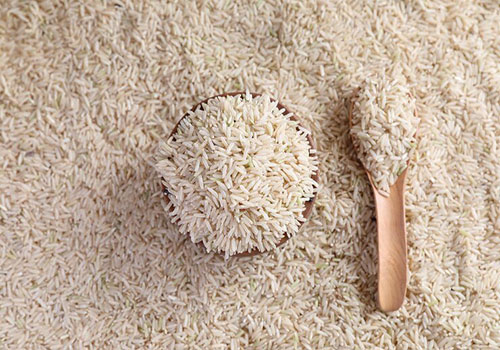Rice is more than just a staple — it is a wholesome, gluten-free grain packed with benefits, and it is naturally Nutritious, Simply Delicious. Rice is cultivated in numerous varieties worldwide, which can be broadly categorized into several main groups based on grain size, aroma, and cooking characteristics.

By Grain Length
-
Long-grain rice
- Examples: Basmati, Jasmine, Carolina Gold
- Features: Fluffy, separate grains when cooked.
-
Medium-grain rice
- Examples: Arborio, Valencia (used in paella), Calrose
- Features: Moist, tender, and slightly sticky.
-
Short-grain rice
- Examples: Sushi rice, Mochigome (glutinous rice)
- Features: Sticky and clumps together when cooked.
Brown rice, among whole grain varieties, provides numerous health benefits

- Energy Boosting: Rich in carbohydrates, rice provides quick and efficient energy.
- Digestive Health: Brown rice is high in fiber, aiding digestion and promoting regular bowel movements.
- Heart Health: Whole grain rice contains compounds like lignans and magnesium that support heart function and reduce the risk of heart disease.
- Blood Sugar Control: Brown and wild rice have a lower glycemic index compared to white rice, helping to manage blood sugar levels.
- Rich in Nutrients: Rice contains B vitamins (like niacin, thiamin, and riboflavin), iron, and manganese which are essential for metabolism and overall health.
- Gluten-Free: Naturally, gluten-free, rice is a great grain for those with celiac disease or gluten intolerance.
- Antioxidants: Colored rice varieties like black or red rice are rich in antioxidants that combat oxidative stress.
- Sustained Energy from natural carbohydrates
- High in Fiber to support digestion.
- Heart-Healthy Nutrients like magnesium and B vitamins
- Low Glycemic Options for balanced blood sugar
- Antioxidant-Rich varieties like black and red rice
- Enjoy rice the healthy way — pure, plant-based, and full of goodness.
By Type / Usage
Basmati
Aromatic long-grain rice from India and Pakistan.
Jasmine
Fragrant long-grain rice from Thailand.
Arborio
Italian rice used for risotto.
Sushi rice
Short-grain Japanese rice, sticky for sushi.
Black rice (Forbidden rice)
Nutty flavor, rich in antioxidants.
Brown rice
Whole grain with bran layer; more fiber and nutrients.
Wild rice
Technically a grass, not true rice; chewy and nutty.
Glutinous rice (Sticky rice)
Used in Asian desserts and dishes.
Hashemi rice
Is a premium Middle Eastern variety, renowned for its exceptional aroma, long grains, and delicate flavor. It is a staple in Middle Eastern cuisine, particularly favored for dishes like chelow and polow.
Key Characteristics of Hashemi Rice:- Grain Type: Long, slender, and creamy-white grains.
- Aroma & Flavor: Mild, naturally fragrant scent with a subtle, clean taste.
- Texture: Soft and fluffy when cooked, with grains remaining separate.
- Cooking Quality: Excellent for steaming and traditional Middle Eastern rice dishes; maintains its quality even hours after cooking.
Nutritional Profile (per 100g)
- Calories: Approximately 357 kcal
- Carbohydrates: 81.3 g
- Protein: 6.7 g
- Fat: 3.5 g
- Fiber: 4 g
- Amylose Content: 21.38% (contributing to its fluffy texture)
- Fat Content: 1.42%
